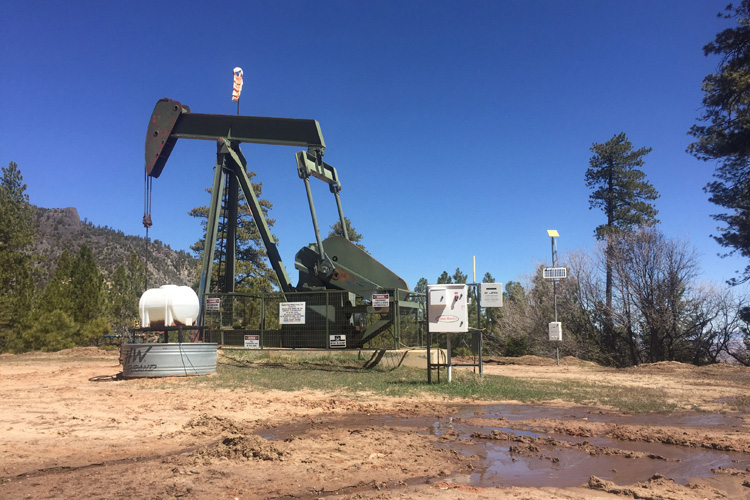Arizona isn’t known as a big oil producing state, like Texas and North Dakota, but what oil is produced here is on Navajo land.
Arizona’s largest oil field, the Dineh-bi-Keyah, also known as “the people’s field,” has produced 19 million barrels of crude since the deposit was discovered in the 1960s, according to the Environmental Information Administration.
Capitol Operating Group, based in Louisiana, took over the oil field in 2016.
Since then, the operation has shifted from oil to helium drilling. Oil and natural gas rights to land in the Holbrook Basin in particular are a hot commodity for energy developers who see Arizona as the Saudi Arabia of helium.
“Those helium wells come from a reservoir that’s deeper than the oil,” company president David Burns said.
Capitol Operating Group already has converted eight wells from oil to helium, a change that has been positive for the environment, Burns said.
“We’ve reduced emissions, particularly on that field … even though they were acceptable previously, they are significantly less than they were before,” he said.
The company plans to convert two more wells over summer.
According to the EIA, oil production at Dineh-bi-Keyah has dropped from a high of 35,000 barrels a month to 1,000.
Arizona’s history with oil
Arizona became the 30th petroleum-producing state on Oct. 13, 1954, after Shell Oil Co. drilled a natural gas well in Apache County, on the Navajo Reservation.
That well began producing 3.6 barrels of oil a day but it wasn’t long before competitors joined in.
In 1958, the Humble Oil Co. drilled near Shell’s well, and by 1961, it was its own natural gas well.
By 2016, Arizona had 32 oil and natural gas wells.
Over the past 100 years, more than 1,100 oil and gas exploration wells have been drilled in Arizona.
Renewable energy
Arizona has few fossil fuel resources, but it does have abundant renewable energy sources, primarily solar, according to the EIA.
The state has an average of 299 sunny days a year, ranking second in the nation behind Nevada in total solar generation in 2017. That same year, Arizona’s electricity generation from solar energy exceeded generation from hydroelectric power for the first time.
The state’s total installed solar-powered electricity-generating capacity has increased substantially over the past two decades, according to the EIA.
Arizona ranks third in the nation in installed solar generating capacity, after California and North Carolina.
There’s been a push on the Navajo Nation to move away from fossil fuels altogether and toward renewable energy.
Navajo Nation President Jonathan Nez recently signed a proclamation calling clean energy on the nation a top priority.
Rep. Raul Grijalva, a Democrat who represents Tucson, says Congress should help tribal communities go green by pushing legislation to incentivise clean energy on lands like the Navajo Nation.
“We need to encourage renewables,” Grijalva said. “We need to assist those nations in being able to look at wind, look at solar, geothermal, etc.”
Challenges to going green
Though Arizona is a leader for solar energy, not all Arizonans support renewable energy.
In the 2018 general election, voters defeated Prop 127 which would have required Arizona utility companies to get 50% of their electricity from renewable energy sources by 2030.
The battle over Prop 127 was one of the most expensive in the state’s history with more than $60 million spent. And some argued the proposition would spike electric bills.
Matthew Benson, a spokesman for Arizonans for Affordable Electricity – also known as No on Prop 127 – said Arizonans could expect a hefty increase in utility costs if the measure passed.
“For the typical Arizona family, that means a $1,000 or more in added utility costs over the course of the year,” he said, arguing at the time, that low income families and seniors living on fixed incomes would be hit the hardest.
The current renewable portfolio standard remains unchanged.
That standard, set by the Arizona Corporation Commission, requires the state’s 16 regulated electricity providers to get 15 percent of their energy from renewable sources such as wind and solar by 2025.
On top of pushback for renewables in Arizona, U.S. energy use hit an all time high in 2018 with 80 percent of that energy coming from fossil fuels.
Story by LAUREN SCHIELER, Cronkite News




